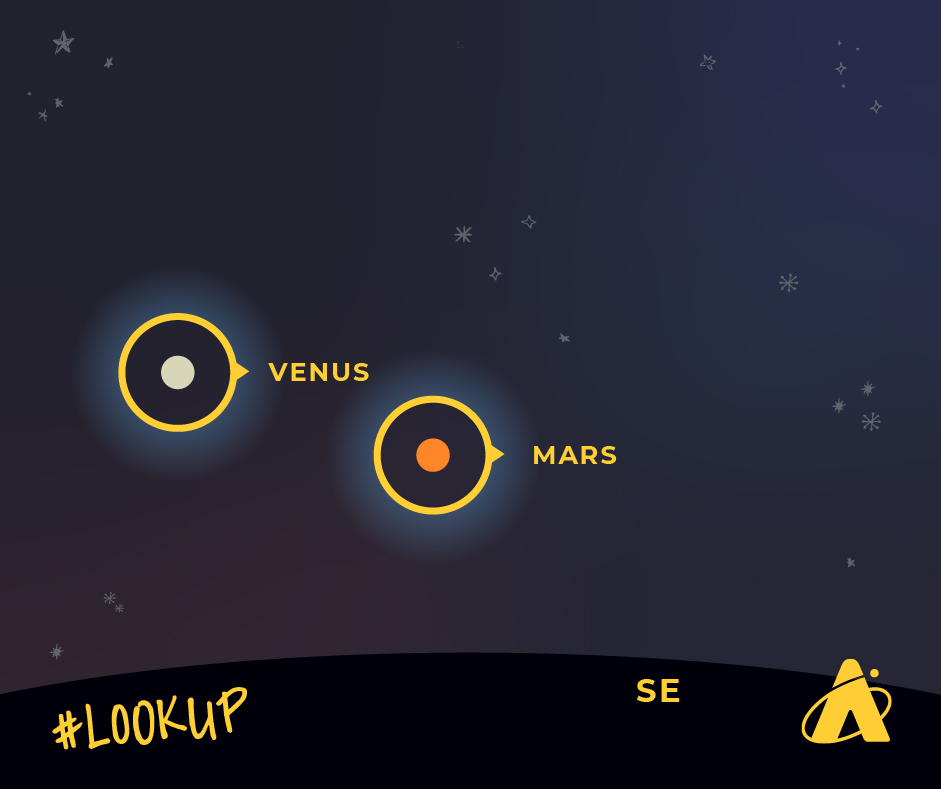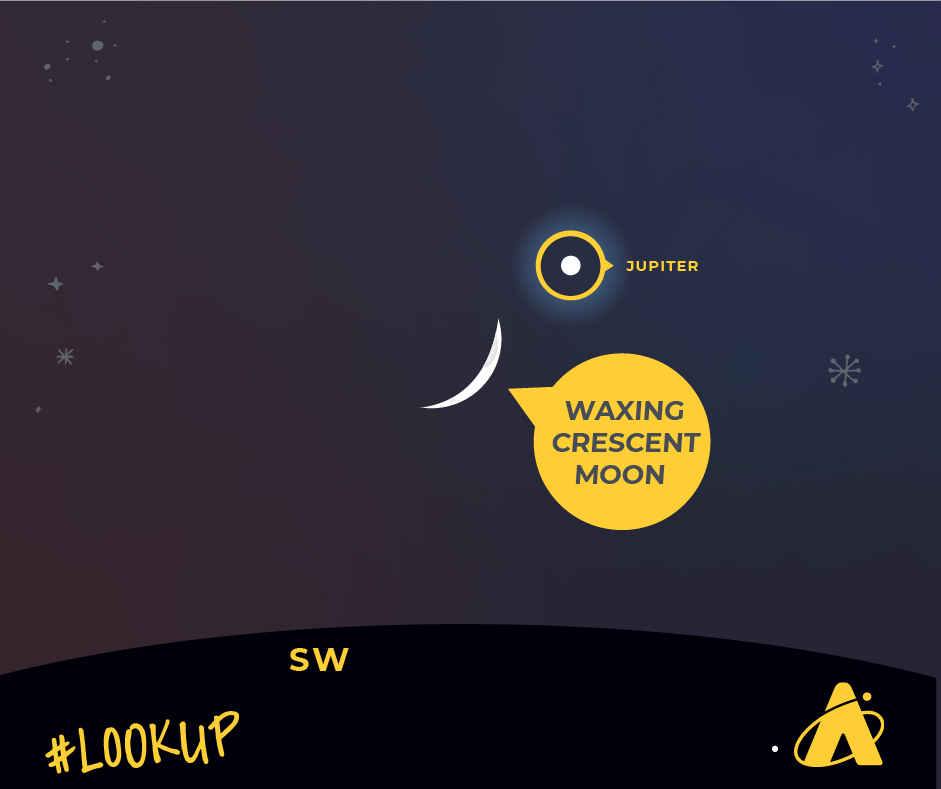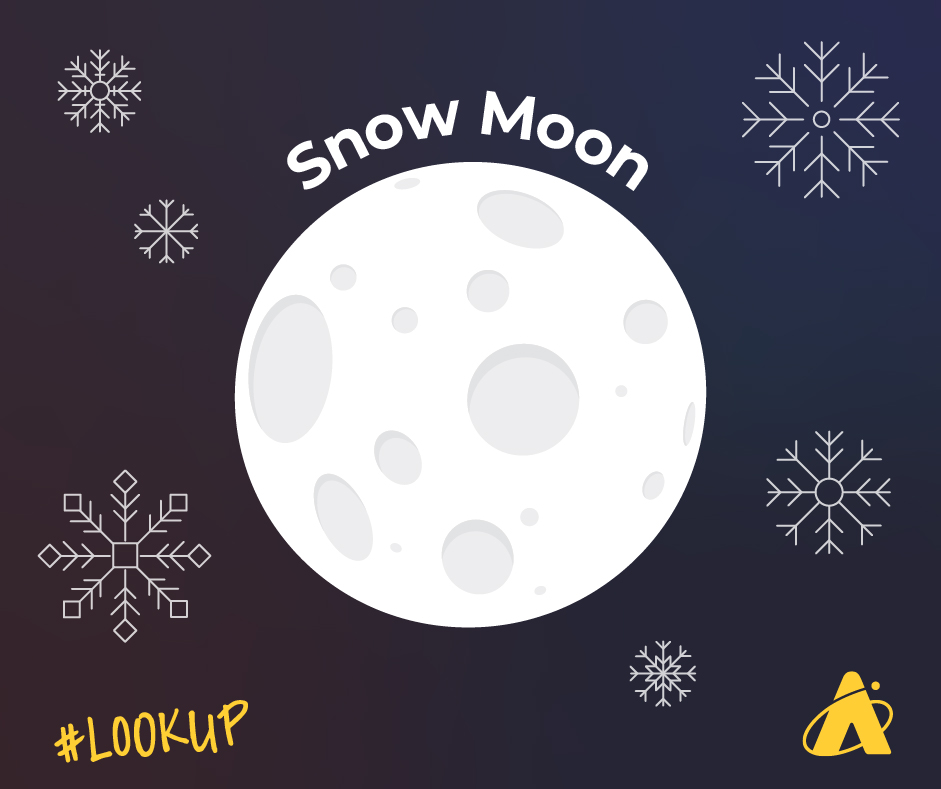Adler Skywatch: February 2022

Header Image: Venus by NASA’s Mariner 10 spacecraft in 1974 Image Credit: NASA/JPL-Caltech
The brightest planet in the sky gets even brighter than usual this month, February 2022.
The planet Venus reaches its greatest brilliance for the entire year this month. Look for Venus very low in the southeast at the start of morning twilight. It’s bright all month, reaching a dazzling -4.6 in magnitude during the second week in February. For comparison, the planets Jupiter and Mars reach about -3 magnitude at their brightest. (The lower the number of magnitude, the brighter the object.)
A few degrees below and to the right of bright Venus, see if you can spot the planet Mars. This month, Mars is not at its brightest, at about magnitude +1; so you may be able to recognize Mars only due to its ruddy color. The morning of February 27, try looking close to the southeast horizon about 40 minutes before sunrise, to spot an almost vertical line-up of Venus, Mars, and a slim waning crescent Moon, from top to bottom.

Also in the pre-dawn sky, try looking about ten degrees or so below and to the left of Venus and Mars, during the first half of the month. If you have a very clear view of the east-southeast horizon, you may be able to spot the planet Mercury (between 0 and +1 magnitude this month). After February 15, Mercury begins to move closer to the Sun each morning—and, since morning twilight starts earlier each day, Mercury becomes more difficult to see. Once the Sun reaches the horizon, stop looking, or you risk permanent eye damage.
The first ten days of the month, look near the west-southwest horizon about 50 minutes after sunset to spot the planet Jupiter. The early-evening of February 2, a very slender, waxing crescent Moon appears slightly below and to the left of Jupiter. The planet sets closer and closer to the Sun each evening this month, so by February 11 or so it will be nearly impossible to see in the glow of sunset.

The planet Saturn appears so close to the Sun this month that it’s difficult if not impossible to see.
Earth’s northern hemisphere is still in the midst of winter this month. However, the halfway point between the start of winter and the start of spring falls around February 3. So, you may be noticing that we’re getting more daylight this month than we did the past two months. In fact, this month starts with about ten hours of daylight per day and ends with roughly eleven day-lit hours. Compare that to about nine hours per day back in December. The increase in daylight will continue through the next few months.

First Quarter Moon: February 8
Full Moon: February 16
Last Quarter Moon: February 23
(This month there is no New Moon in the Chicago area.)
Please note: these descriptions are for the Chicago area, using Central time.
Subscribe To Skywatch Wednesday This February
Tour the night sky with the Adler Planetarium’s Theaters Manager Nick, who uses cutting-edge visualizations, NASA images, and astrophotography to show you what you can see in the night sky throughout the year.
Learn From Our Astronomy Educators
Watch the exclusive live episode of Sky Observers Hangout this February! Have questions about telescopes or binoculars? Curious about what that bright thing you saw last night was? In this Sky Observers Hangout episode, astronomy educators from the Adler Planetarium will be answering your questions all about sky observing.






